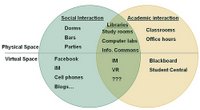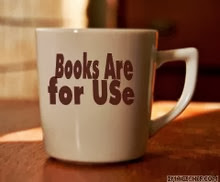I begin this post with my own effort to create a Webliography on:
Market Research Resources via Libraries and
Focus Group Technique for Research on Libraries
While the above two are extensive sources, I came across a term: Environmental scanning. Googled and found one interesting post in a blog, called, Science Library Pad, by Richard Akerma
And incidentaly, two different, albeit related resources, inspire me to write this post: First is on Environmental Scanning and the other is ALA's marketing Kit.
First thing first. Richard identifies the meaning and usage and how this term, environmental scanning (also known as business intelligence, competitive intelligence, etc.), has evolved. Nevertheless, there admit fact that the LCSH does use the subject heading competitive intelligence (and not environmental scanning).
NB: What surprises me is, there are many citations that have same and / or similar works in the literature (including works that deal with market surveys conducted to assess needs, log analysis to capture the tacit and tangible, etc., community surveys, and so on). If someone coins a term, does it mean that whatever was done in the past is all written off. At least one scholar comes to my mind, not cited by Richard and the OCLC citation, viz.,
Prof. Chun Wei Choo. Based on this random citation behavior and usage of terms that look appealing, I wonder, like all other attempts to be innovative and creative, is this another attempt to present, old wine in a new bottle?
Any comments? What do the Library Marketing Gurus opine on my note? Any one would like to respond? Does scanning sound, better than research, search, and survey? [search for environmental scanning on the web and you will find medical, environmental, ecological, and other resources. Are we, then, short of terms that we are looking for more?]
See more on
Market Research * libraries The second resource, I came across today is:
Marketing @ your library, ALA
@ your library® Toolkit for Academic and Research Libraries
Google for pursuasion, pull, push, in marketing and libraries.
Industry Canada. Competitive Intelligence, see also: Competitive Intelligence E-Monitor
PUNCHLINE:
Marketing of Evil' opposed by the gay community is locked out of over 99% of college libraries
The Virginia Tech librarian ran a database search on "The Marketing of Evil" to see how many libraries worldwide had a copy, and came up with some surprising results. He searched WorldCat, an online database of the Dublin, Ohio-based Online Computer Library Center, or OCLC, which is accessed by more than 53,548 libraries in 96 countries and territories worldwide. "According to WorldCat," he said, "only 188 libraries worldwide report owning a copy of 'The Marketing of Evil.' I'm pleased that Virginia Tech is one of only eight libraries in Virginia that reports owning the book. I had requested it because I wanted to read it. One of my colleagues saw to it that it was purchased. We are now pleased to see that it is currently checked out."
"'Marketing of Evil' locked out of college libraries," World Net Daily, April 26, 2006 --- http://www.worldnetdaily.com/news/article.asp?ARTICLE_ID=49921
[source: Tidbits on May 5, 2006]






